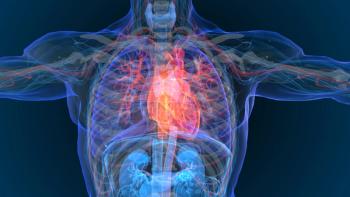
- July 2018 Diabetes Supplement
- Volume 84
- Issue 7
The Bidirectional Link Between Diabetes and Cancer
Diabetes mellitus (DM) and cancer are each serious public health burdens in the United States and around the world. DM is far more common, affecting an estimated 30.3 million people in the United States, according to the CDC.1 Cancer affects a smaller proportion of the population, with approximately 1.7 million new cancers diagnosed each year.2 As the seventh-leading cause of death in the United States, DM is far less deadly, claiming the lives of almost 80,000 patients each year, while cancer, which is the second-leading cause of death, claims the lives of over 600,000 patients each year.1,2
At first glance, diabetes and cancer may appear to be unrelated conditions, but decades of research have started to establish a link between these diseases. Recent consensus reports from the American Diabetes Association and the American Cancer Society (ACS), as well as the American Association of Clinical Endocrinologists and the American College of Endocrinology, confirm that epidemiologic evidence supports the theory that diabetes is a risk factor for cancer.3,4 Recent data indicate that the risk relationship between diabetes and cancer is bidirectional and that cancer and/or cancer therapy may represent risk factors for the development of diabetes.5-7
SHARED RISK
Some findings suggest that the 2-way relationship between diabetes and cancer is attributable to common risk factors.5 Nonmodifiable risk factors shared by diabetes and cancer include age, sex, and race, while modifiable, or lifestyle, risk factors include obesity, smoking, physical inactivity, diet, and alcohol intake.1-3 In the United States, both diseases occur more frequently among patients who are older, male, and African American.3 Lifestyle factors play an important role in the development of both diseases, and patients at the highest risk are overweight or obese, physically inactive, and consume a diet high in processed foods, carbohydrates, and red meats but low in fresh fruits, vegetables, and whole grains.3 Smoking and excess alcohol consumption are also associated with an increased risk of both diabetes and cancer.3
Modifiable risk factors: impact of body weight, physical activity, and diet on diabetes and cancer. Obesity appears to be one of the strongest links between diabetes and cancer, with physical activity and diet playing supportive roles in the pathogenesis of both diseases. According to recent data from the CDC on adults with diabetes, 26.1% of patients are overweight, 43.5% are obese, and 17.8% are severely obese. In addition, 40.8% of adults with diabetes are physically inactive, meaning they had less than 30 minutes of physical activity each week (10 minutes each of work, leisure, and transportation).1 Similarly, the ACS projected that 18% of cancer cases and 16% of cancer deaths were associated with the collective impact of being overweight or obese, a sedentary lifestyle, and poor nutrition.2 Studies typically examine individual types of cancer when measuring risk, and obesity has demonstrated a negative association with breast, colorectal, endometrial, gallbladder, liver, thyroid, renal, ovarian, and pancreatic cancers.2-4 Further supporting the link between obesity, diabetes, and cancer, increasing evidence suggests that the incidence of diabetes and some types of cancer decreases when patients lose weight, which is often best accomplished by increased physical activity and improved diet and nutrition.2,3
RISK OF CANCER IN PATIENTS WITH DIABETES
Numerous individual studies and meta-analyses have confirmed an increased risk of some types of cancer among patients with diabetes. Patients with diabetes are at the highest risk of cancers of the liver, endometrium, and pancreas and a somewhat less pronounced risk of colorectal, breast, and bladder cancers.3,4,8 Interestingly, diabetes is associated with a decreased risk of prostate cancer.3,4,8 In addition, many studies, including a recent prospective US study of 1 million patients followed for 26 years, reinforce the supposition that patients with diabetes have increased cancer-related mortality.3,9 Hypotheses that attempt to explain the impact of diabetes on cancer risk consider the contributions of hyperinsulinemia, hyperglycemia, chronic inflammation, and antidiabetic medications.3
Hyperinsulinemia and hyperglycemia. Hyperinsulinemia, an excess of insulin circulating in the blood, follows one of 2 courses, depending on whether a patient has type 1 diabetes mellitus (T1DM) or type 2 diabetes mellitus (T2DM).8 Patients with T1DM experience an absolute insulin deficiency because of destruction of the β cells of the pancreas by the immune system, and these patients therefore require exogenous administration of insulin, which is often in excess of the normal physiologic levels of insulin found in humans.8 In patients with T2DM, hyperinsulinemia first occurs in response to insulin resistance, though it may persist later in the course of the disease as pancreatic β cells are destroyed and exogenous administration of insulin becomes necessary, similar to disease progression in T1DM.8
Hyperinsulinemia is linked to both a greater risk of cancer and increased cancer mortality.10 Hyperinsulinemia promotes the growth of cancer by activating several signaling pathways at the cellular level, leading to stimulation of mitosis, interfer- ence with apoptosis, and promotion of tumor cell invasion and metastasis.3,4,8,11 In addition, increased levels of insulin in the blood reduce the synthesis of sex hormone-binding globulin in the liver, which in turn leads to elevated levels of circulating sex hormones, such as estrogens and androgens. Elevated levels of sex hormones are tied to a greater risk of cancers of the breast and endometrium.3,10,11
The connection between hyperglycemia and cancer risk is somewhat less clear because patients frequently present with concomitant hyperglycemia and hyperinsulinemia, making it a challenge to separate their effects.8 Hyperglycemia, which is defined as an elevation of blood sugar, can also result from several conditions besides DM, including obesity, pancreatitis, and chronic stress, all of which have been tied to the development of cancer.12 Although persuasive evidence supports the belief that cancer cells metabolize glucose more rapidly than normal cells, hyperglycemia has not yet been definitively linked to cancer as an independent risk factor.3,8,12
RISK OF DIABETES IN PATIENTS WITH CANCER
More recent investigations have focused on the risk of DM in patients with cancer. According to a 2018 cohort study from Korea, the risk of developing diabetes is significantly increased in patients with cancers of the pancreas, kidney, liver, gallbladder, lung, blood, breast, stomach, and thyroid.5 Investigators speculate that this increased risk of DM in patients with cancer may be related to the direct effects of cancer or the therapies used to treat cancer, such as corticosteroids, chemotherapeutic agents, immunosuppressants, targeted therapies, immunomodulatory drugs, hormone therapies, and total body irradiation (TBI) for hematopoietic stem cell transplant (HSCT).5-7,13
Diabetes due to direct cancer effects. Cancer itself is associated with many physiologic processes that can predispose patients to the disease. Many patients with cancer develop a collection of symptoms known as cancer cachexia, which is characterized by muscle wasting, loss of appetite, and subsequent weight loss. Cancer cachexia is associated with insulin resistance and impaired glucose metabolism, leading to DM.5 Stress hyperglycemia is another condition that may develop in patients with cancer because of acute illness, frequent hospitalizations, and physiologic stress. The collective effects of stress hyperglycemia may contribute to the development of DM.5
Diabetes Due to Cancer Therapy. Cancer therapies are also thought to play an important role in the development of diabetes. Results from a recently published retrospective study of children who underwent TBI for HSCT to treat cancer confirmed the suspicion that patients were at a greater risk of diabetes later in life, even in the absence of obesity.6 Corticosteroids, which are well known for increasing blood sugar, are often implicated in cancer-induced hyperglycemia and DM because of their widespread use in the treatment of cancer in chemotherapeutic regimens, in antiemetic protocols, for the amelioration of brain metastases and hematologic cancers, and to improve quality of life.5,13 In addition, numerous individual pharmacologic agents and a few classes used to treat cancer are associated with an increased risk of DM (table).5,7,13-15
CONCLUSIONS
Although diabetes and cancer may ostensibly seem unrelated, these diseases have an increasingly well-documented bidirectional relationship. A solid and long-standing body of evidence confirms that patients with DM are at a greater risk of developing cancer, and data from recent studies continue to build support for the theory that patients with cancer have a higher risk of developing DM. Further research, especially in the form of prospective studies, is needed to better understand the relationship between these diseases so that we can develop strategies to reduce the risk in both directions.
REFERENCES
1. CDC. National diabetes statistics report, 2017. CDC website. cdc.gov/diabetes/ pdfs/data/statistics/national-diabetes-statistics-report.pdf. Updated February 24, 2018. Accessed June 14, 2018.
2. The American Cancer Society. Cancer facts & figures 2018. ACS website. cancer.org/research/cancer-facts-statistics/all-cancer-facts-figures/cancer-facts-fig- ures-2018.html. Published 2018. Accessed June 15, 2018.
3. Giovannucci E, Harlan DM, Archer MC, et al. Diabetes and cancer: a consensus report. Diabetes Care. 2010;33(7):1674-1685. doi: 10.2337/dc10-0666.
4. Handelsman Y, Leroith D, Bloomgarden ZT, et al. Diabetes and cancer — an AACE/ACE consensus statement. Endocr Pract. 2013;19(4):675-693. doi: 10.4158/ EP13248.CS.
5. Hwangbo Y, Kang D, Kang M, et al. Incidence of diabetes after cancer develop- ment: a Korean national cohort study [published online June 7, 2018]. JAMA Oncol. doi: 10.1001/jamaoncol.2018.1684.
6. Nakagawa R, Hosokawa-Tsuji A, Aoki Y, et al. Total body irradiation for hematopoietic stem cell transplantation during early childhood is associated with
the risk for diabetes mellitus. Endocrine. 2018;61(1):76-82. doi: 10.1007/s12020- 018-1595-3.
7. Hamood R, Hamood H, Merhasin I, Keinan-Boker L. Diabetes after hormone therapy in breast cancer survivors: a case-cohort study [published online April 24, 2018]. J Clin Oncol. doi: 10.1200/JCO.2017.76.3524.
8. Vigneri P, Frasca F, Sciacca L, Pandini G, Vigneri R. Diabetes and cancer. Endocr Relat Cancer. 2009;16(4):1103-1123. doi: 10.1677/ERC-09-0087.
9. Campbell PT, Newton CC, Patel AV, Jacobs EJ, Gapstur SM. Diabetes and cause-specific mortality in a prospective cohort of one million U.S. adults. Diabetes Care. 2012;35(9):1835-1844. doi: 10.2337/dc12-0002.
10. Bellastella G, Scappaticcio L, Esposito K, Giugliano D, Maiorino MI. Metabolic syndrome and cancer: “the common soil hypothesis” [published online May 26, 2018]. Diabetes Res Clin Pract. doi: 10.1016/j.diabres.2018.05.024.
11. Garg SK, Maurer H, Reed K, Selagamsetty R. Diabetes and cancer: two diseases with obesity as a common risk factor. Diabetes Obes Metab. 2014;16(2):97-110. doi: 10.1111/dom.12124.
12. Duan W, Shen X, Lei J, et al. Hyperglycemia, a neglected factor during cancer progression. Biomed Res Int. 2014;2014:461917. doi: 10.1155/2014/461917.
13. Fathallah N, Slim R, Larif S, Hmouda H, Ben Salem C. Drug-induced hyper- glycaemia and diabetes. Drug Saf. 2015;38(12):1153-1168. doi: 10.1007/s40264- 015-0339-z.
14. Zaied AA, Akturk HK, Joseph RW, Lee AS. New-onset insulin-dependent dia- betes due to nivolumab. Endocrinol Diabetes Metab Case Rep. 2018;2018:17-0174. doi: 10.1530/EDM-17-0174.
15. Morviducci L, Rota F, Rizza L, et al. Everolimus is a new anti-cancer molecule: metabolic side effects as lipid disorders and hyperglycemia [published online April 20, 2018]. Diabetes Res Clin Pract. doi: 10.1016/j.diabres.2018.04.001.
Articles in this issue
over 7 years ago
Embracing Concentrated Insulins: With a Focus On Humulin R U-500over 7 years ago
Recent Advances in the Management of Diabetesover 7 years ago
ADA Spotlights Gender Biases in Diabetes Health CareNewsletter
Stay informed on drug updates, treatment guidelines, and pharmacy practice trends—subscribe to Pharmacy Times for weekly clinical insights.




















































































































































































































